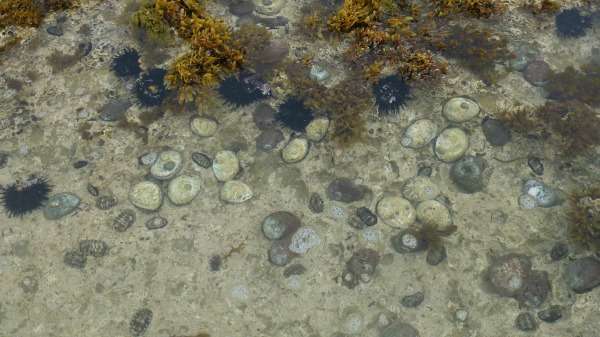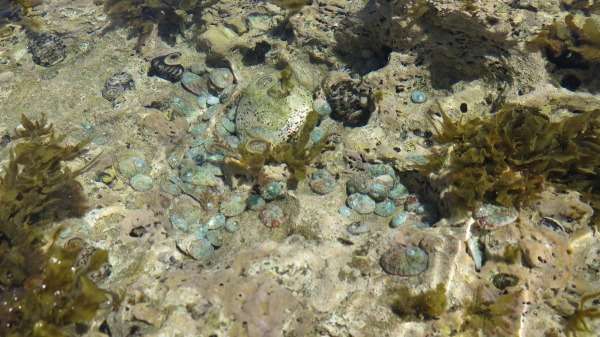First success for recovering Kalbarri abalone

Scientists working to return abalone to a once-flourishing population on the notoriously wild coastline north of Kalbarri have enjoyed their first major success—with new juvenile abalone recruits popping up in the region.
Department of Fisheries scientists have previously translocated nearly 60,000 abalone to wave-pounded reef platforms on the cliffs north of Kalbarri in the hope of reintroducing the species to the area.
Abalone were wiped out from this once-significant abalone fishery after warmer waters experienced during the 2011 marine heat wave decimated 99.9 percent of the local abalone population.
The sighting of juvenile abalone recruits provides evidence that the translocated abalone are breeding Department of Fisheries researcher Dr Lachlan Strain says.
"It's a pretty important success," Dr Strain says.
"At the start we didn't know if the translocated abalone would take at all, let alone breed."
"This is the first major hurdle successfully completed in the long process of bringing them back."
However, Dr Strain warns that the handful of juveniles recorded are by no means enough to consider reopening the fishery, which was closed after the devastating population crash.
He says there is no evidence of abalone recovering naturally at any of the control sites that department staff monitor every six months.

With the help of Kalbarri fishermen, Fisheries staff have released abalone onto five sites, and compare these stocked sites with those which have had no intervention.
At the start of the project they relocated about 6000 mature abalone taken from reefs further south at Lucky Bay and another 3000 from Perth reefs.
To avoid putting additional pressure on these wild populations, they have now began releasing juvenile abalone reared in aquaculture facilities, with some 48,000 juveniles released so far.
With the help of Kalbarri fisherman John Craike they will continue to release aquaculture-reared juveniles for another few years.
Dr Strain says it could take decades for the abalone population to recover to its previous extent, if they do at all.
And, should another marine heat wave occur, the project could possibly be back to square one.
Provided by Science Network WA
This article first appeared on ScienceNetwork Western Australia a science news website based at Scitech.

















